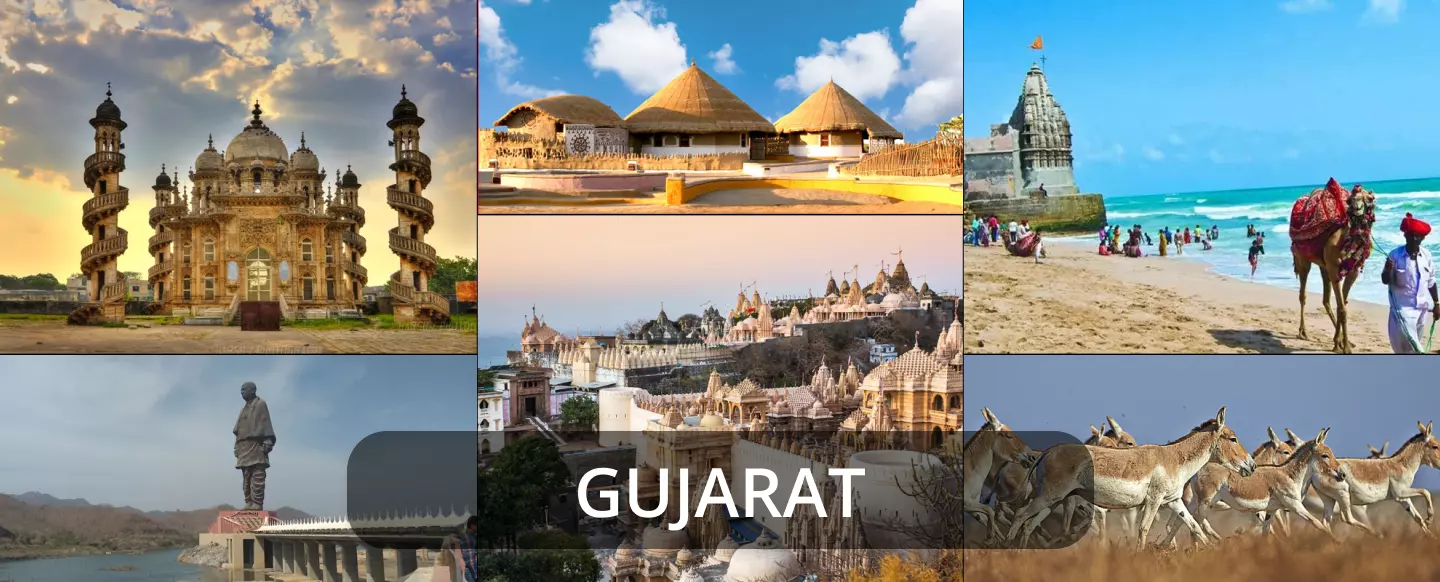
Aavo Padharo, which translates to "Welcome" in Gujarati, is used here because the phrase "the visitor is God" and the Gujarati people's very warm and welcoming nature will tempt you to visit frequently.
Gujarat, the home state of Mahatma Gandhi, the Father of the Country, stretches out into the Arabian Sea with a touch of the desert and a 1600 km-long coastline. The beaches, temple towns, and old capitals are well-known. Gujarat has given the world hill resorts, wildlife reserves, and awe-inspiring scenery. The state is also made wealthy through festivals, sculptures, and handicrafts. Gujarat has one of the most sophisticated technical infrastructures in the nation and is home to the biggest petrochemical complex.
The Jain Temple Centers in Palitana and Girnar Hills are two of Gujarat's most fascinating locales. Gujarat has long been a key hub for Jains. The Gir Woods, which are the sole home for Asiatic Lions in India, a ride across the desert at the Wild Ass Sanctuary, and Ahmedabad's stunning Indo-Saracenic architecture are some of the state's top attractions in addition to the Jain temples. A trip to Kutch is unique because of the vibrant tribal settlements there.
Gandhi Circuit -
Heritages Sites -
Buddhist Circuit -
Cities: Ahmedabad | Gandhinagar | Vadodara | Rajkot | Junagadh| Jamnagar | Surat | Bharuch | Bhavnagar | Botad | Godhra | Gondal | Mahesana| Morvi | Ankleshwar | Balasinor | Bhachau
Monuments: Modhera Sun Temple | Rani ki Vav| Statue of Unity
Hill Stations: Saputara
Waterfalls: Hathni Mata Waterfalls| Gira Waterfalls| Jamjir Waterfalls| Juna Ghata Waterfalls | Ninai Waterfalls | Zanzari Waterfalls
Beaches: Dumas Beach
Copyright 2012-2025 Indiamap Digital Private Limited. All rights reserved. Privacy Policy | Terms of Use